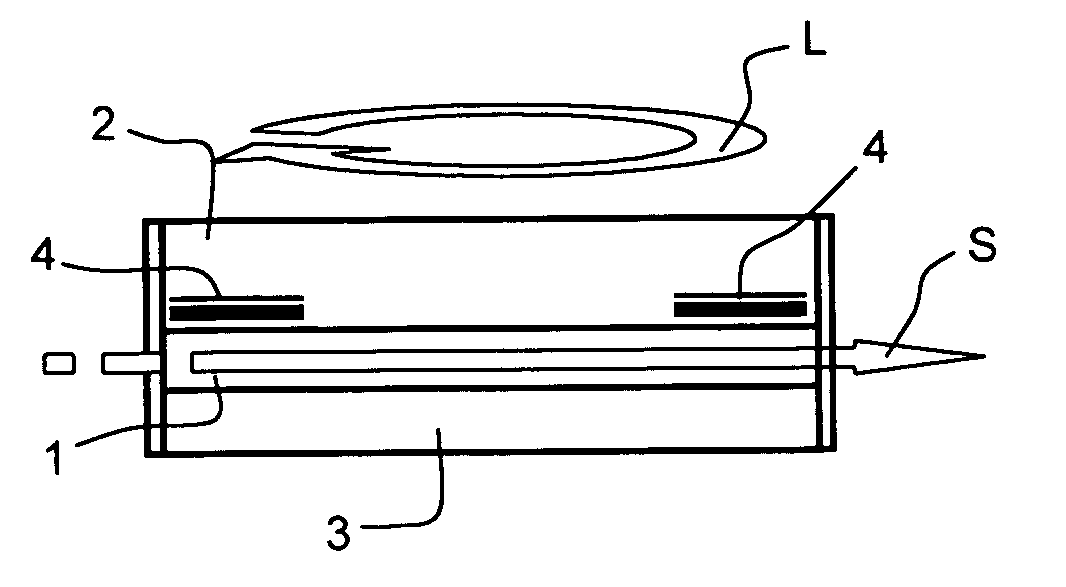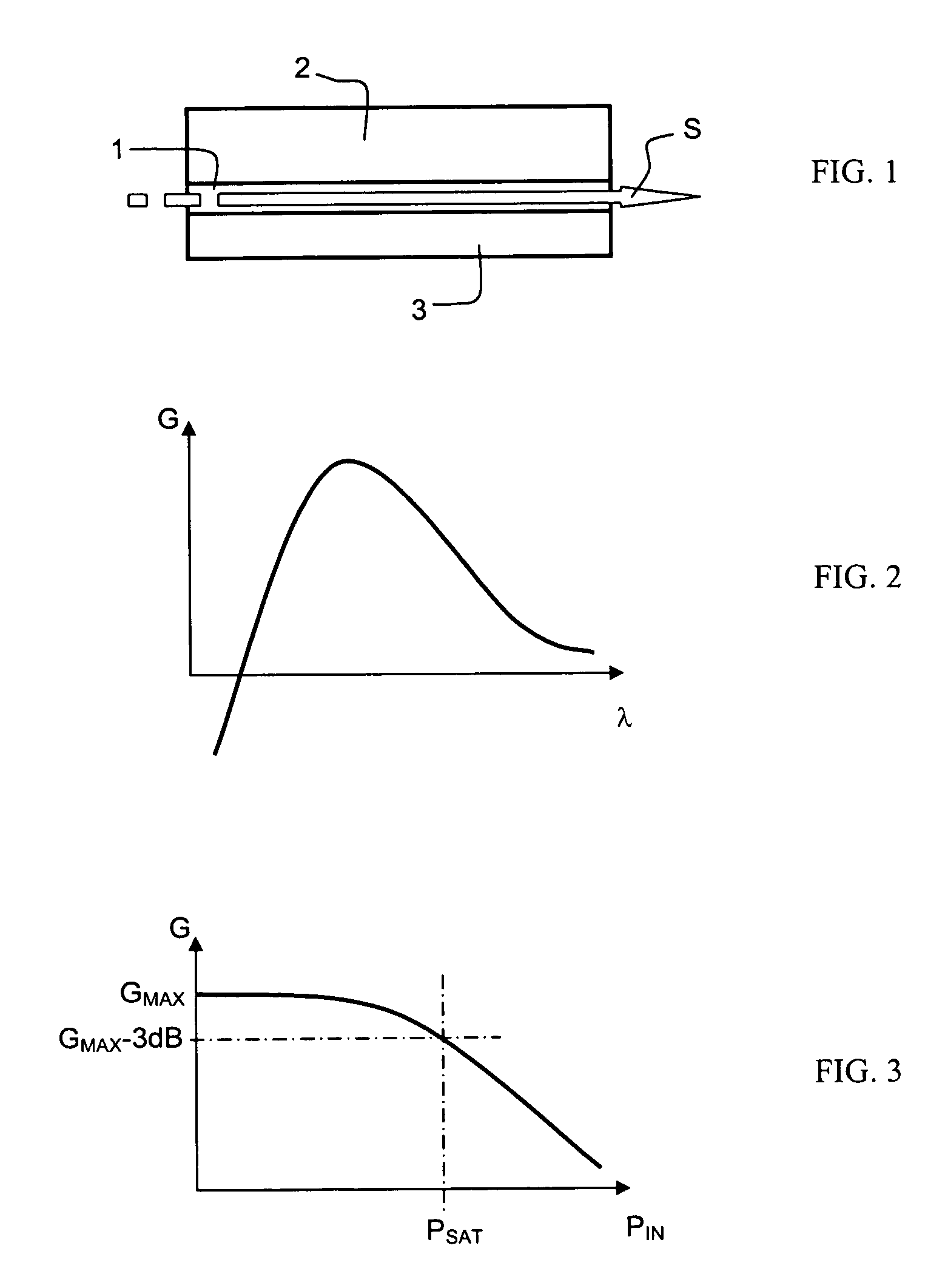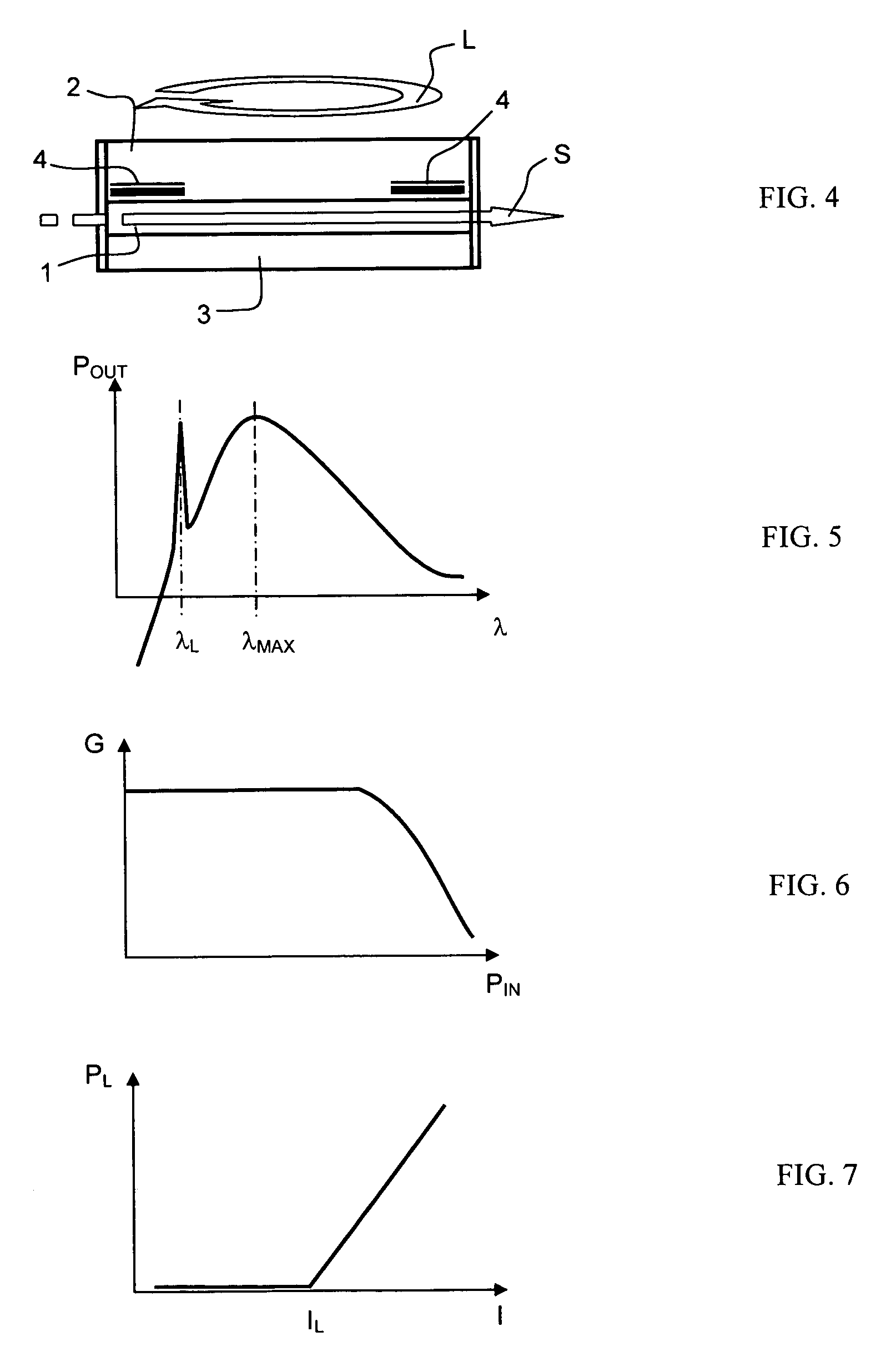Semiconductor optical device having a clamped carrier density
- Summary
- Abstract
- Description
- Claims
- Application Information
AI Technical Summary
Problems solved by technology
Method used
Image
Examples
Embodiment Construction
[0034] The quantum dots are microstructures that contain a small quantity of charge carriers, free electrons or holes. They are fabricated in semiconductor-type materials and have dimensions between a few nanometres and a few tens of nanometres in the three dimensions of space. The size and shape of these structures, and therefore the number of holes that they contain, may thus be precisely controlled. As in an atom, the energy levels in a quantum dot are quantized, which makes these structures particularly advantageous for a large number of physical applications.
[0035] As shown in FIG. 8, only two possible energy transition states may exist in a quantum dot structure, called the ground state (GS) and the excited state (ES), the ground state corresponding to the lowest energy level. These two transition states correspond to the two vertical arrows shown in FIG. 8. Corresponding to these two transition states are two emission wavelengths, denoted by λES and λGS. As already mentioned...
PUM
 Login to View More
Login to View More Abstract
Description
Claims
Application Information
 Login to View More
Login to View More - R&D
- Intellectual Property
- Life Sciences
- Materials
- Tech Scout
- Unparalleled Data Quality
- Higher Quality Content
- 60% Fewer Hallucinations
Browse by: Latest US Patents, China's latest patents, Technical Efficacy Thesaurus, Application Domain, Technology Topic, Popular Technical Reports.
© 2025 PatSnap. All rights reserved.Legal|Privacy policy|Modern Slavery Act Transparency Statement|Sitemap|About US| Contact US: help@patsnap.com



